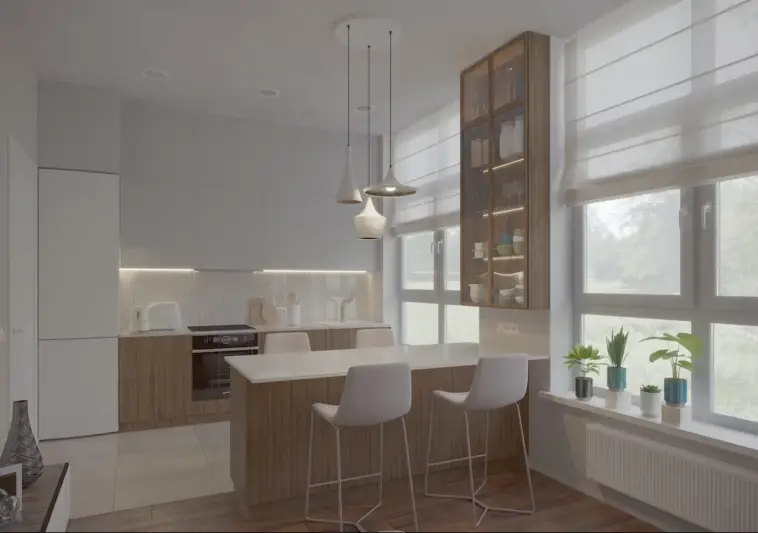The kitchen accounts for a significant amount of a home’s worth. More and more homeowners today are putting effort into updating and improving this multipurpose room to serve their many needs and look great. The kitchen is one of the busiest rooms in any house and has the most appliances, making it a prime candidate for the largest remodeling jobs. Now is the perfect time to modernize the kitchen’s aesthetic and make functional upgrades to suit your needs better.
Incorporate 3D Remodeling
Renovating your house into the dwelling of your dreams can be thrilling. Ideas, vision boards, paint samples, and more fill the early stages of a home remodel planning process. While this can be a lot of fun and inspiration, it might be tough to picture the finished product in your thoughts or on paper. As you explore, you may consider looking at cutting-edge 3D modeling software to accurately represent your finished product from these concepts. At the beginning stages, a tech company will sit down with you, listen to your ideas, and then create a 3D rendering so that you can see exactly what the final product will look like. Before starting building, this is the best way to visualize how your color, material, and shape selections will look in the finished product. You may now eliminate ineffective concepts and settle on the perfect aesthetic for your brand-new home with the help of these 3D visualizations.
Use Design Kitchen Software
You can also streamline the design of your kitchen with the aid of software. In our program, you can arrange your kitchen appliances in any way. Design software streamlines and expedites the process. With the help of design tools, you can finally leave your comfort zone behind. Kitchen design software may also simulate the use of various materials and finishes. Seeing how the materials will look in your kitchen is a significant benefit of using software instead of more conventional design methods. The smokey quartz countertops and walnut cabinets are a perfect match; you can be sure of it.
Create a Mood Board
No matter how imaginative you are, a mood board is an excellent tool for making your ideas tangible and communicating them to others, such as your kitchen designer, so they can fully understand your vision for the space. A mood board can help you narrow your options when overwhelmed with kitchen design inspiration. It can also serve as a visual representation of your unique sense of style. When creating a mood board, gathering your ideas in one place is the best place to start. This might include magazine cutouts, photos of dream kitchens, paint chips, samples of kitchen equipment, and even textures.
Work With Professional
Numerous considerations must be made while planning a new kitchen. Sometimes it’s hard to decide where to cut corners and where to spend. There could also be significant projects that need extra care. It’s common to feel helpless during a huge home improvement project, especially when replacing major fixtures like cabinets, countertops, or appliances. With the guidance of an expert in kitchen design, even the smallest aspects, such as lighting and color scheme, may be fine-tuned to perfection. No matter how big or little your kitchen renovation project is, it would be best if you took the time at the outset to establish reasonable expectations for yourself. There are many factors to consider, so it’s best not to rush into anything. Make sure you get together with anyone assisting you on the redesign and discuss where your attention and resources should be before you start.
Consider Your Kitchen Use
Consider your needs first, then the kitchen’s price and paint color. Kitchens have long been associated with the rituals of making and sharing meals; for some, this remains their primary function. Maybe you’re a foodie. Or perhaps you and your kids use it as a study area when you have homework to do or when you have to do some work from home throughout the day. Perhaps you organize a cocktail party for friends and acquaintances in the evenings.
Take Accurate Measurements
If you plan on renovating your kitchen, now is the time to write down all your wants, needs, and ideas. Take careful measurements if you want your kitchen renovation to turn out well. Being wrong by even an inch might lead to significant difficulties and frustration. Making sure nothing fits involves the easiest method: taking inaccurate measurements. Kitchen layout begins with determining the available space. To determine how far apart your walls are, measure their length along the floor, using the same direction, measure the wall to roughly the halfway point. Thirdly, take a reading from the ceiling in the same direction. Most walls aren’t perfectly square and could be off by an inch or more. To get an accurate wall measurement, take readings at these three locations. Cabinets should be ordered based on the largest of the three dimensions. If you don’t, the wall and the end cabinet will not be flush.
Gather Inspiration
First, collecting ideas and inspirations can help achieve an ideal kitchen for the project. After all, the goal of any kitchen renovation project should be to create the kitchen of your dreams. Consequently, spending countless hours collecting inspiring kitchen photos is unnecessary to realize your new ideal kitchen. The hardest part of kitchen remodels is choosing a style and figuring out how to implement it. Because there are so many alternatives, making a decision can be difficult. A new kitchen is an exciting project you can use inspiration to help you get started on collecting ideas and making decisions. Don’t question your motivations for collecting emotionally resonant photographs. Even if you don’t consciously think you prefer a certain aesthetic, you may start to see recurring patterns.
After deciding what to highlight, you can utilize techniques like line work, lighting, and contrast in hue to direct the viewer’s gaze. Finally, you should incorporate rhythmic design components to create a sense of visual motion. Constant motion can be achieved by repeating any pattern, shape, color, line direction, etc. Repetition can also take the shape of alternating parts.




